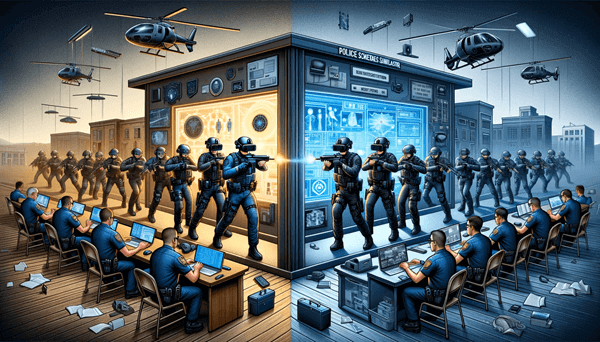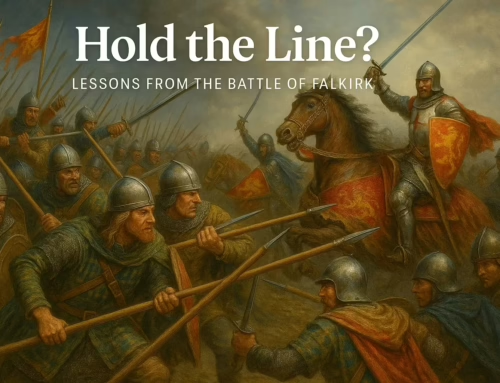At Agincourt, we believe that the best training solutions emerge at the intersection of rigorous academic research and real-world operational experience. As immersive training technology continues to advance, we remain committed to incorporating the latest findings from academia with the practical needs of military, law enforcement, and security professionals to create training systems that enhance preparedness, decision-making, and effectiveness in high-stakes environments.
The Power of Research in Training Innovation
Academic studies continue to validate what seasoned operators already know—realism, immersion, and repetition are the pillars of effective training. The 2025 case study on implementing virtual reality (VR) training in policing using the Technology Acceptance Model (TAM) [12] provides valuable insights into how law enforcement personnel adopt and engage with VR-based training. It highlights several critical factors:
Perceived Usefulness – Officers overwhelmingly reported that VR training provided practical, applicable skills that translated directly to real-world scenarios. The ability to make mistakes in a risk-free environment, correct those mistakes, and run the scenario again made training far more effective than traditional classroom instruction.
Immersion and Interactivity – The study found that fully immersive training—where an officer’s stress levels, cognitive load, and decision-making are tested in high-pressure simulations—resulted in increased engagement and knowledge retention. This aligns with what we see on the ground: when training feels real, personnel respond as they would in actual operations.
Generational Divide in Acceptance – One of the more interesting findings was that newer recruits adapted quickly and found VR training intuitive, while more experienced officers—those with over 10 years of service—showed initial resistance. This underscores a crucial challenge in implementing new training tech: ensuring buy-in from seasoned personnel who have ingrained habits and operational experience.
Gender and Educational Factors – Female officers and those with higher education levels reported higher satisfaction with VR training. This could be linked to a broader acceptance of new technologies or different learning preferences, but it’s an important consideration for how training programs are structured.
The findings confirm what trainers have long suspected: technology-based training isn’t just a gimmick. It provides measurable benefits, but its implementation needs to be carefully managed to maximize adoption and effectiveness.
Bridging Research and Field Experience
At Agincourt, we don’t just read research papers—we put them into practice. Our BattleVR platform is designed to take these findings and apply them in realistic, repeatable, and high-fidelity training scenarios. Whether it’s law enforcement conducting active shooter drills or military units training for urban warfare, BattleVR ensures that operators experience the stress, uncertainty, and split-second decision-making required in real engagements [15].
Our Archer Firearms Training Platform complements this with a focus on judgmental use-of-force and marksmanship in both synthetic and live-fire environments [14]. Research supports what firearms instructors have known for years: muscle memory and instinctive shooting skills degrade without repetition. By integrating sensory feedback, realistic recoil, and adaptive threat scenarios, Archer ensures that personnel develop not just accuracy, but the ability to assess threats and respond under pressure.
Data-Driven Training for Maximum Impact
Modern training should not be based on guesswork. That’s why we integrate real-time tracking and analytics through Herald, our training and record management solution [17]. Academic research consistently shows that measurable performance tracking leads to better training outcomes. Herald enables instructors to monitor reaction times, decision accuracy, and even physiological responses, providing objective data to refine training methodologies. It’s no longer just about gut feelings—every session is logged, analyzed, and used to drive improvement.
The Future of Immersive Training
The battlefield and the streets are evolving, and so must our training. Virtual reality, augmented reality (AR), and mixed reality (MR) are no longer just emerging technologies—they are critical tools in modern force preparation. Academic research, combined with decades of operator experience, confirms that immersive, scenario-based training is the key to ensuring personnel are ready for real-world engagements.
Agincourt remains at the forefront of this revolution, ensuring that our clients receive the most advanced, field-tested training solutions available. We invite military and law enforcement professionals, training officers, and decision-makers to collaborate with us in shaping the next generation of training technology.
#VRTraining #LawEnforcement #MilitaryTraining #TechnologyAcceptanceModel #ImmersiveTraining #Agincourt





